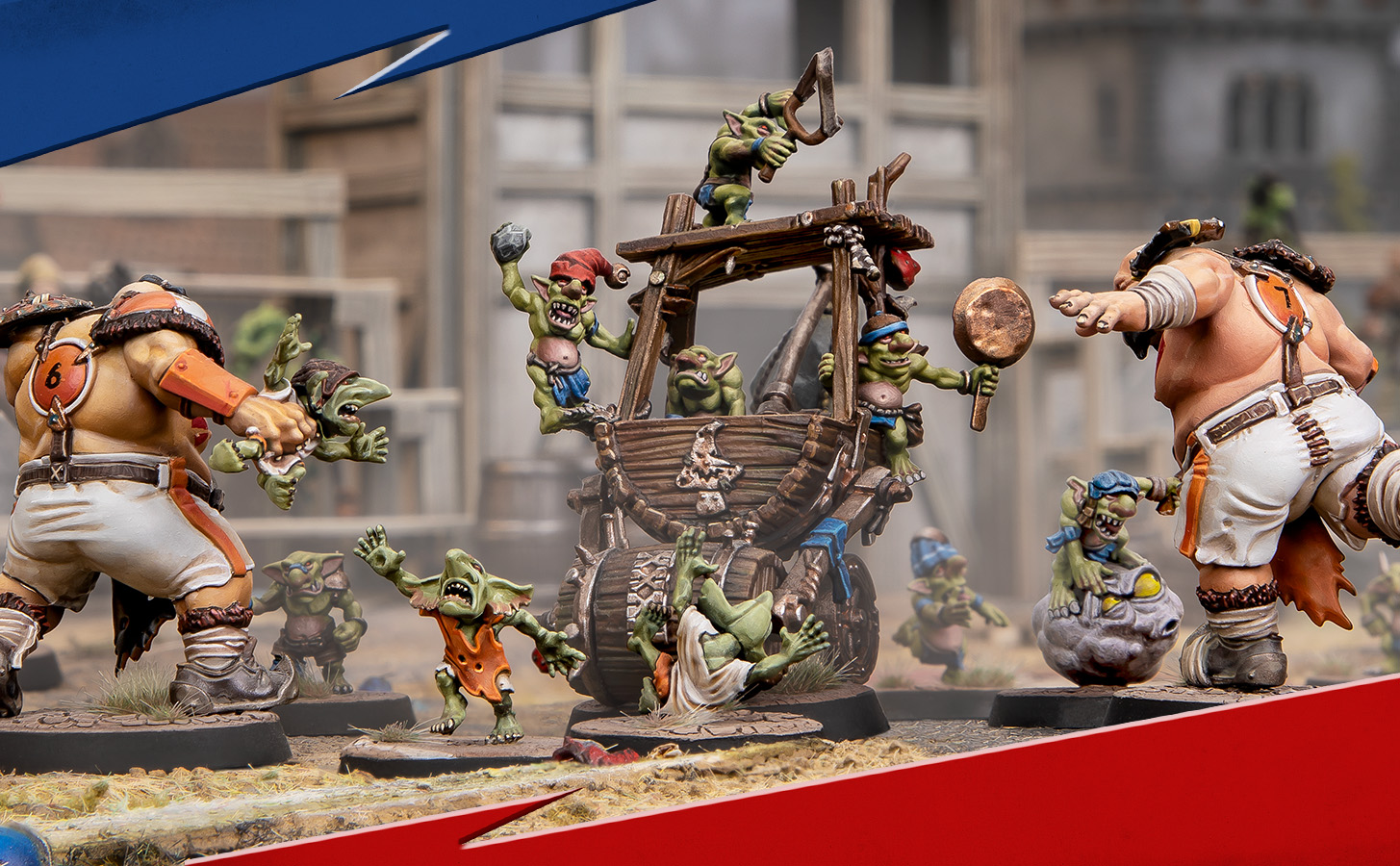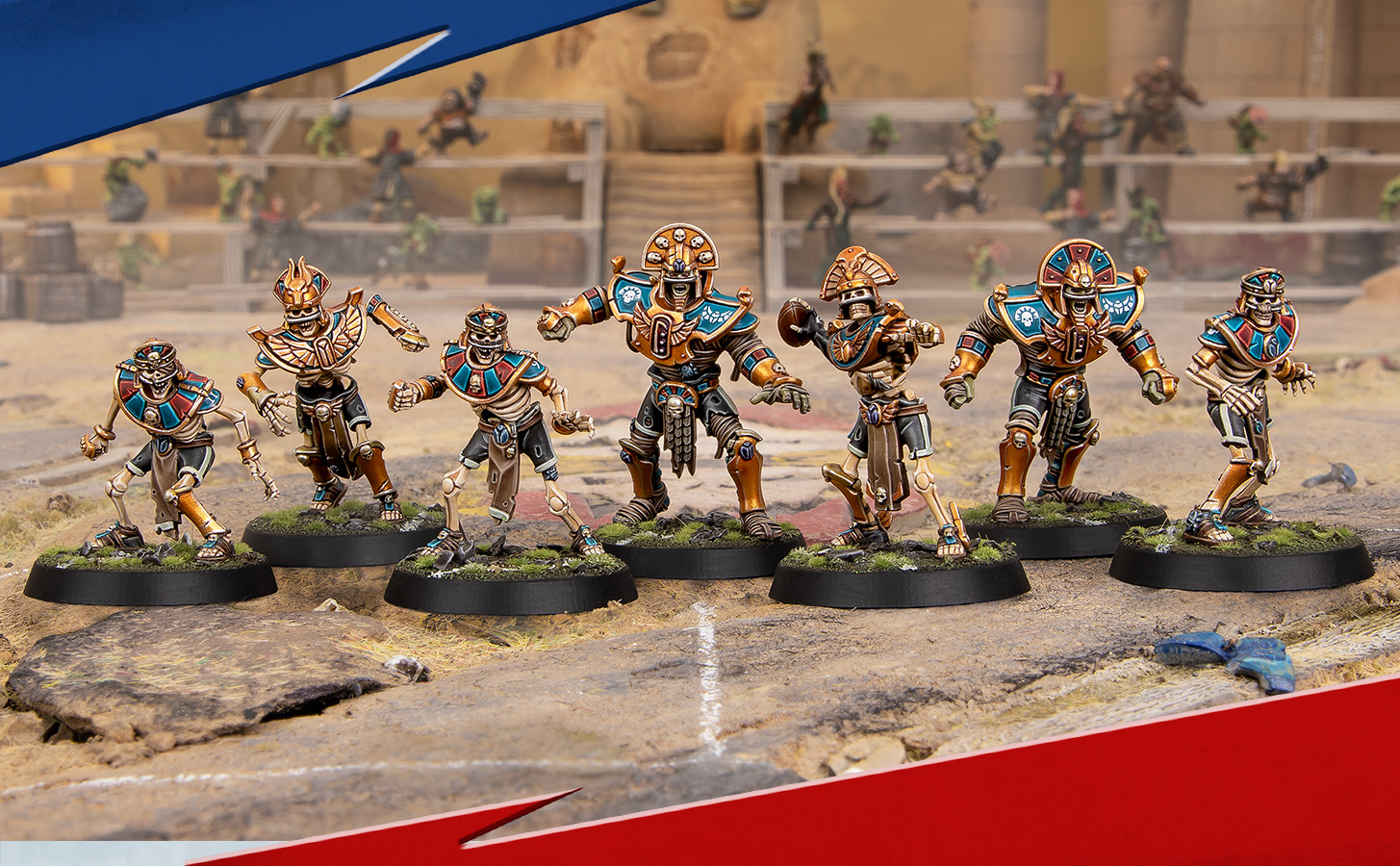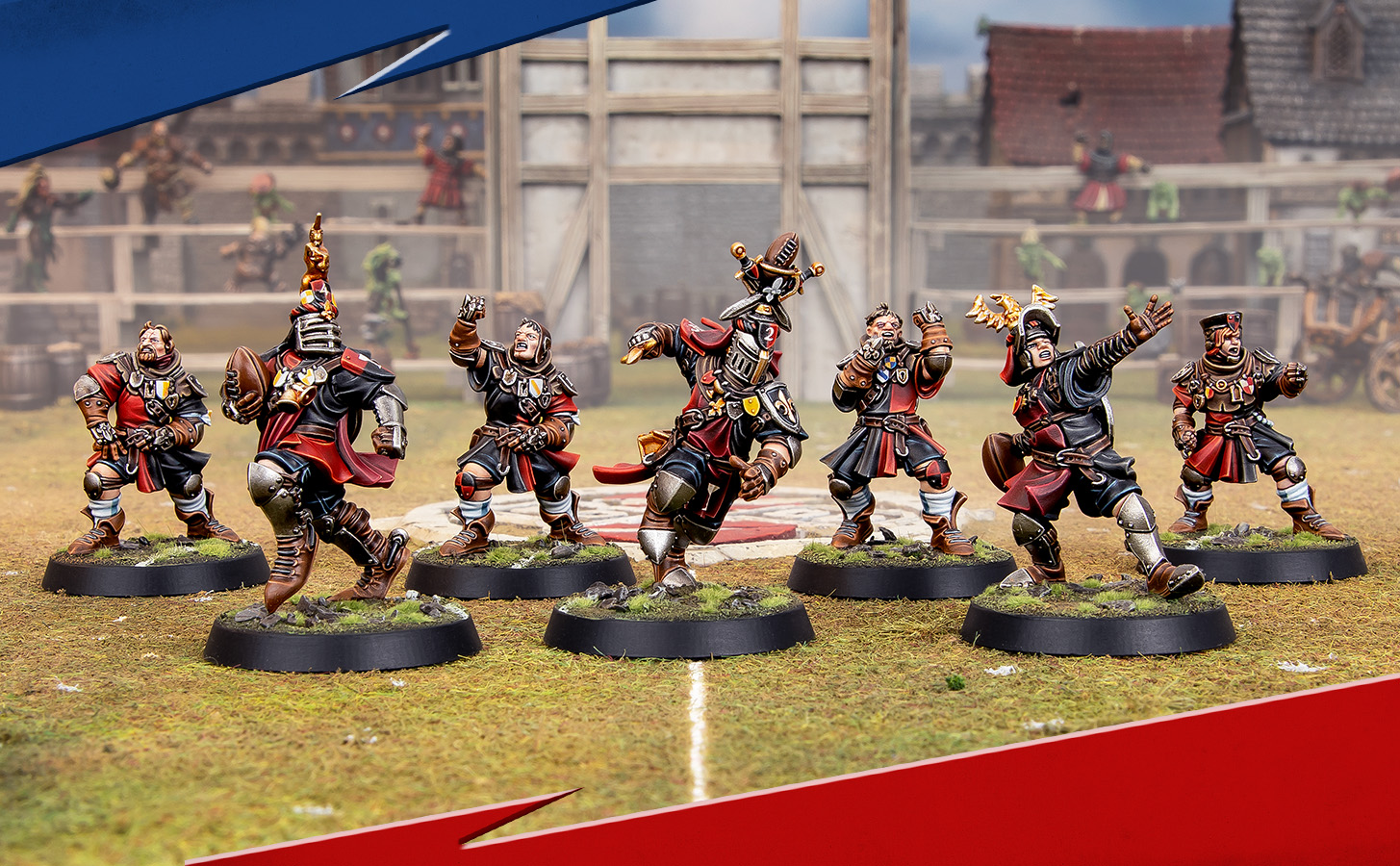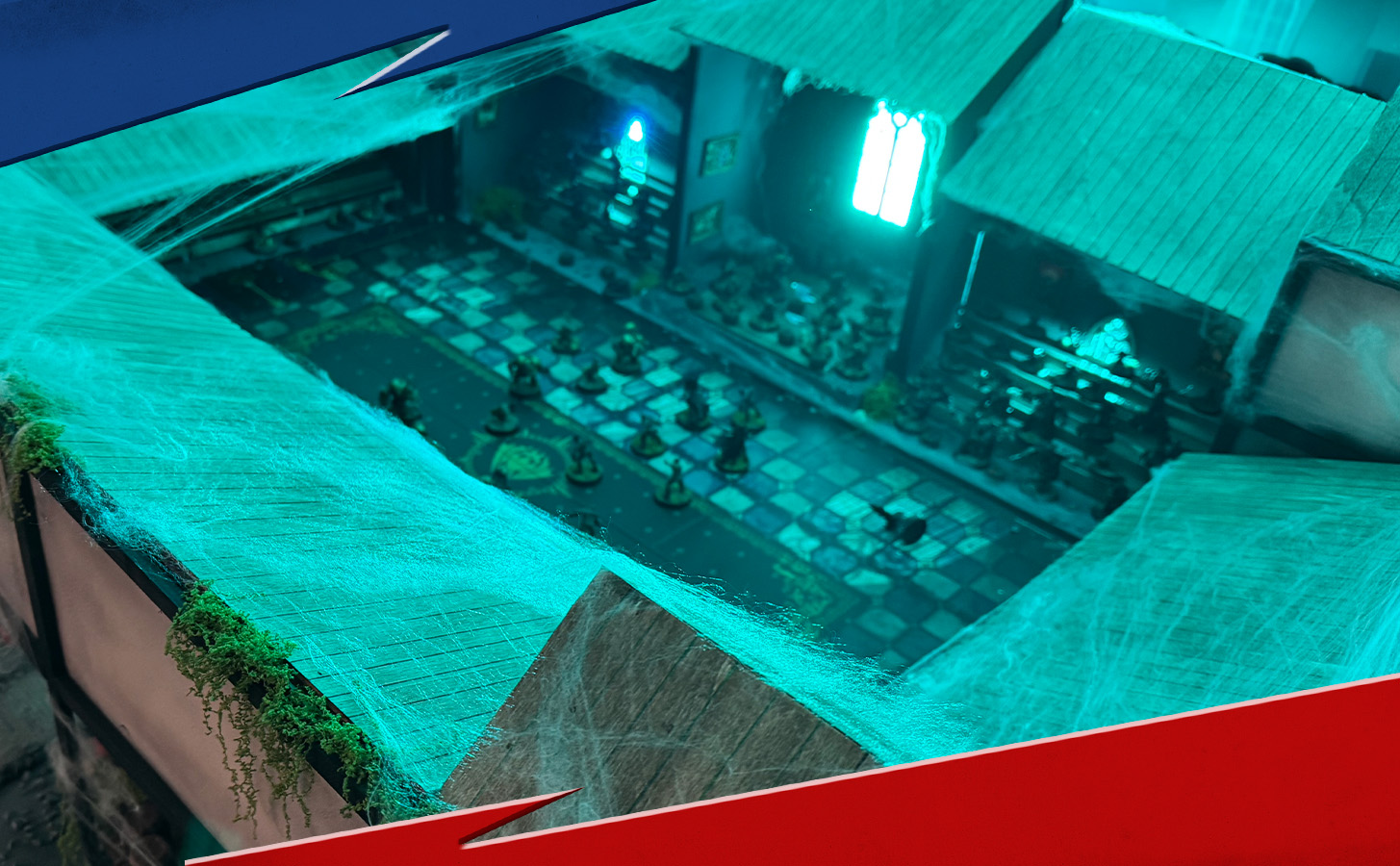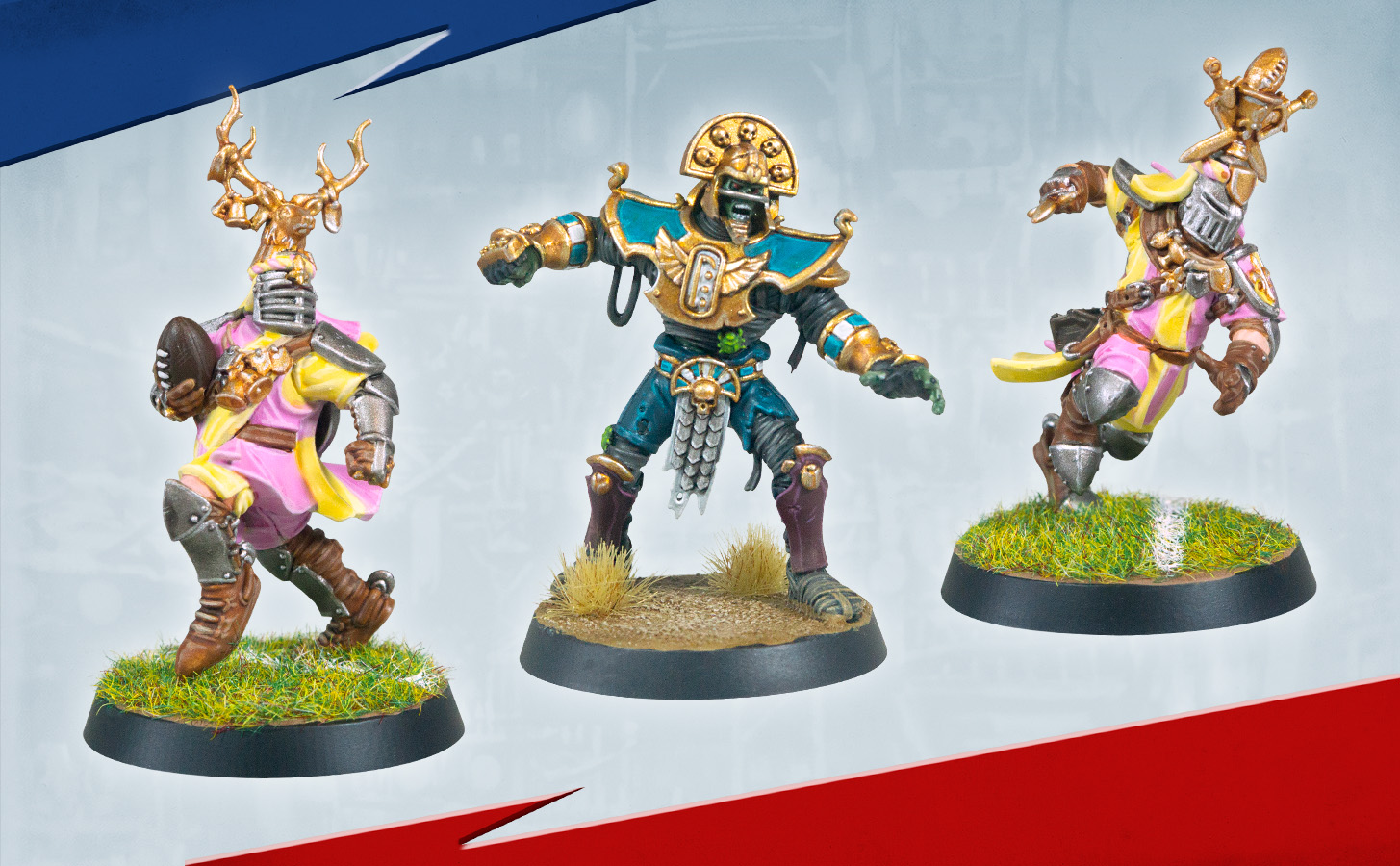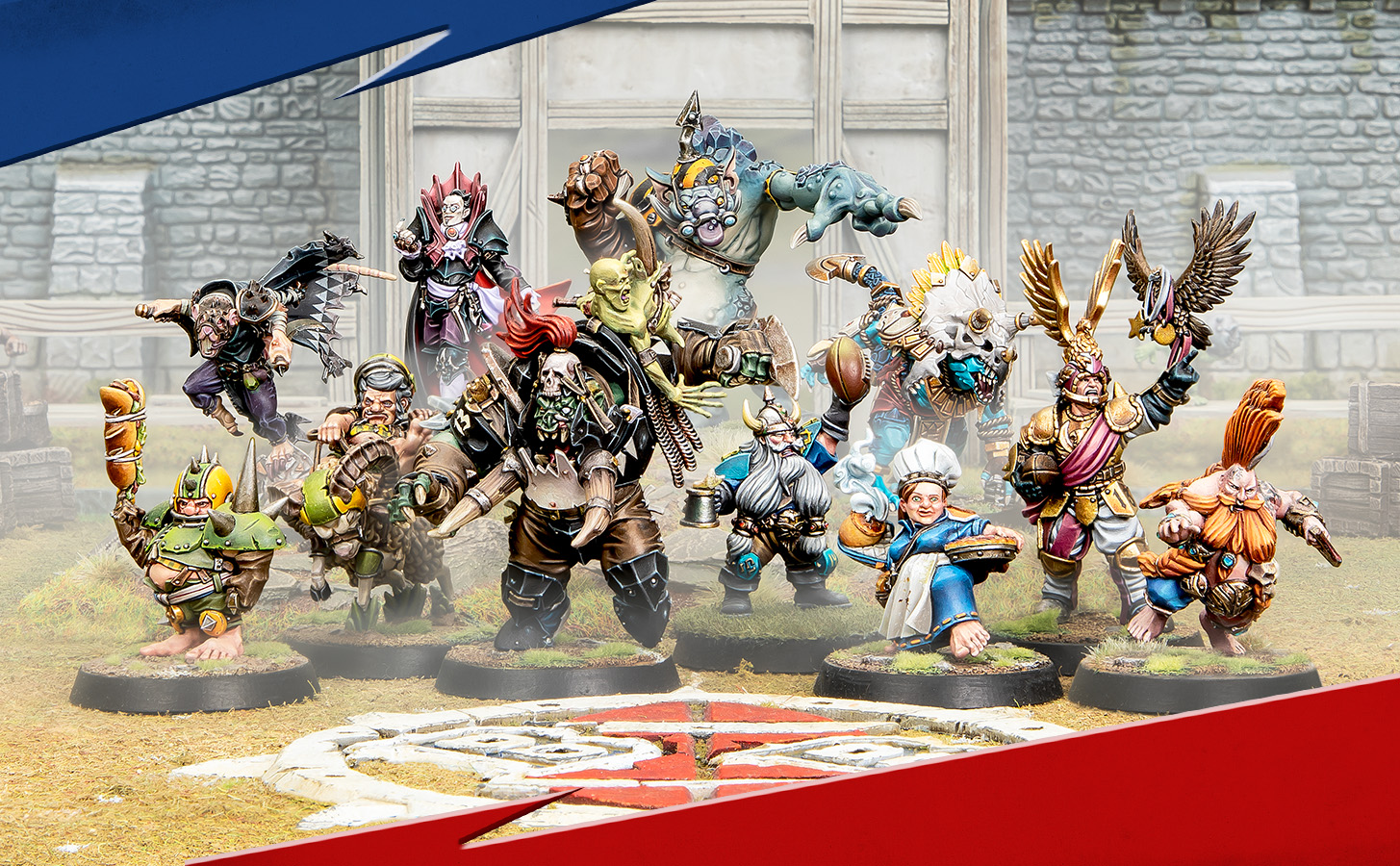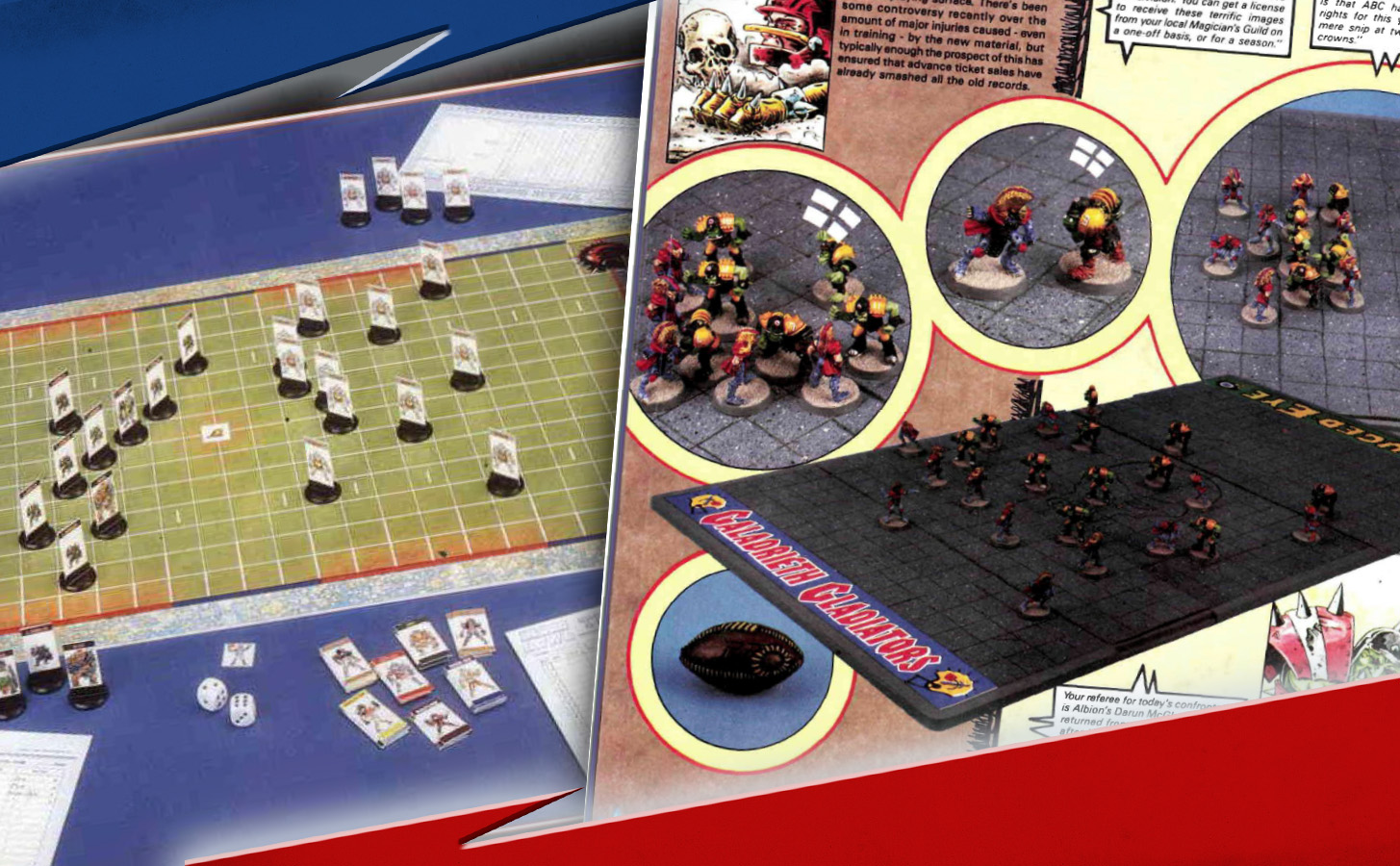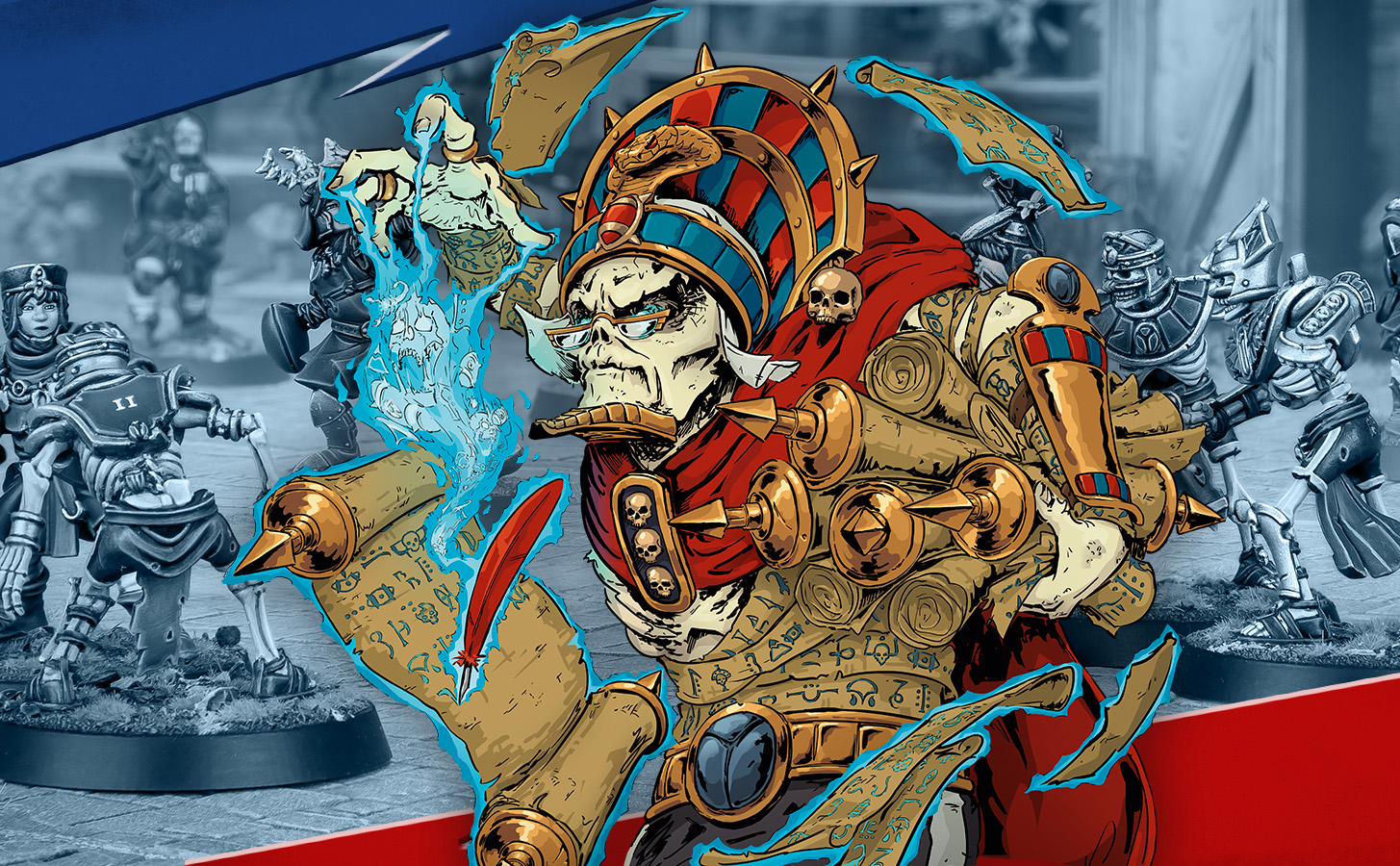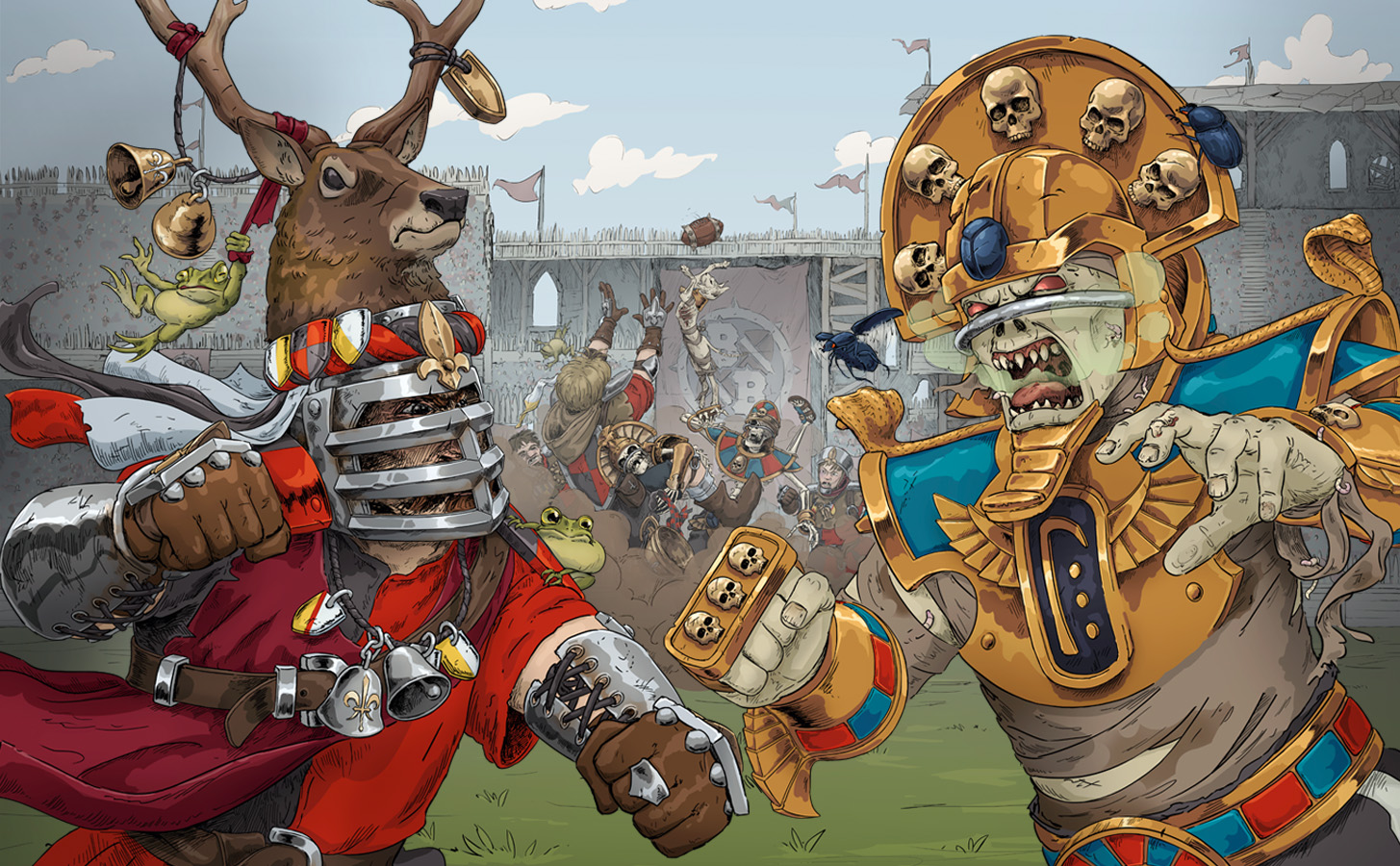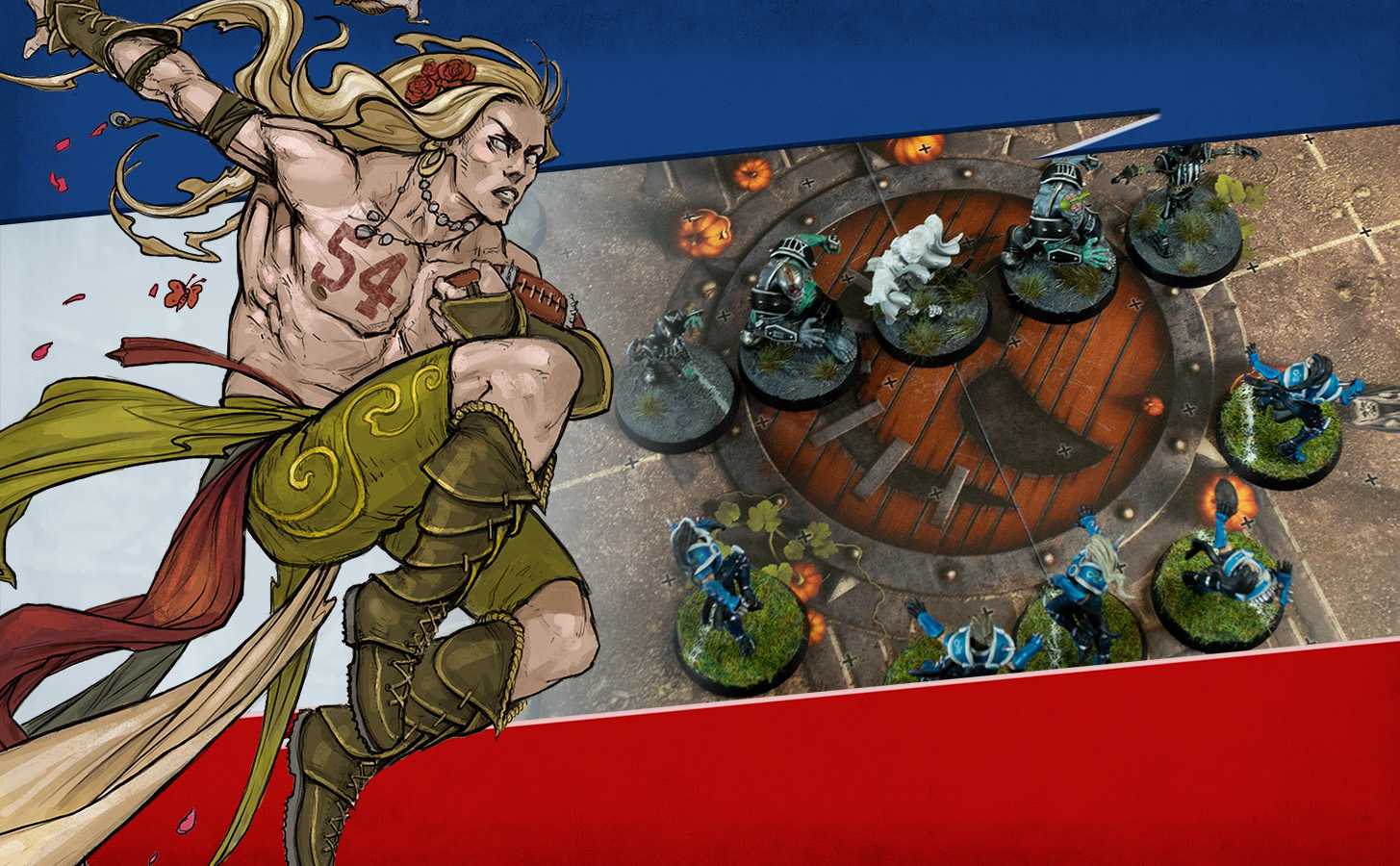The new edition of Blood Bowl will be hitting pitches across the world soon, and coaches everywhere are preparing for carnage on the gridiron. But while we all look forward to the blocks, injuries, and touchdowns to come, it’s also a good time to look back at the real-world history of the game.
We dug deep into the archives to find images of some of the earlier editions of the game from the pages of White Dwarf and other publications, and consulted the oldest and beardiest of our colleagues to regale us with stories of the past.
Blood Bowl debuted in 1986,* using an alternate version of the Warhammer setting that eschewed war in favour of settling scores through sport, and used many of the mechanics from the game of fantasy battles in its rules. This first iteration came in a boxed set with a cardboard playing field in six separate pieces and cardboard standees for the players, though metal miniatures for various teams became available afterwards.
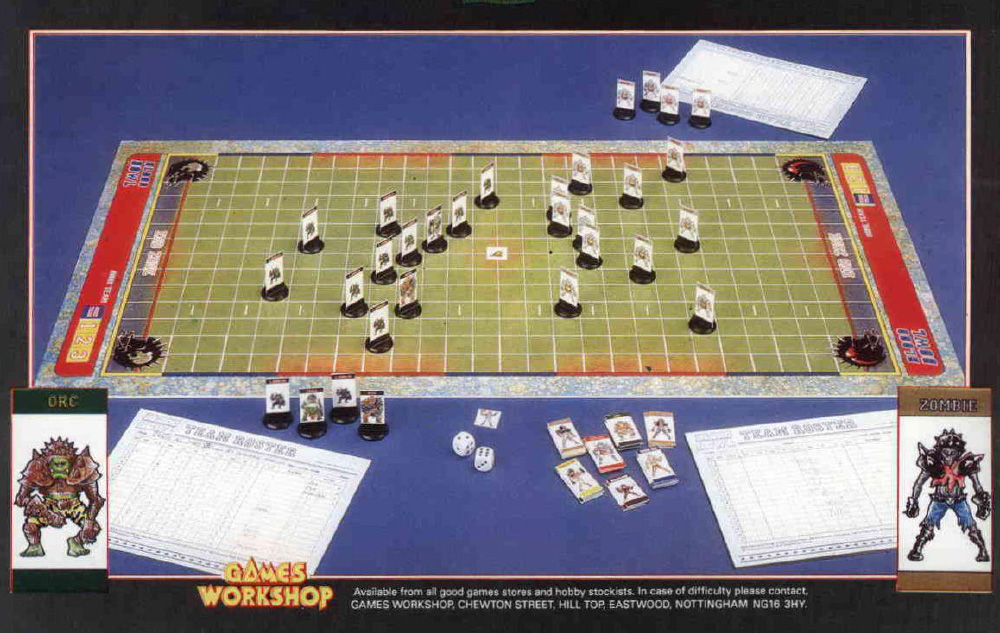
In 1988, a second edition gave the rules a revamp to better reflect the unique nature of the game, launching with a new boxed set containing the first plastic teams, Orcs and Humans – starting a trend of having those two teams (or variations on them) in the core set that lasted for decades. A notable feature of this edition was the polystyrene pitch included in the game, still spoken of fondly by players of a certain vintage.
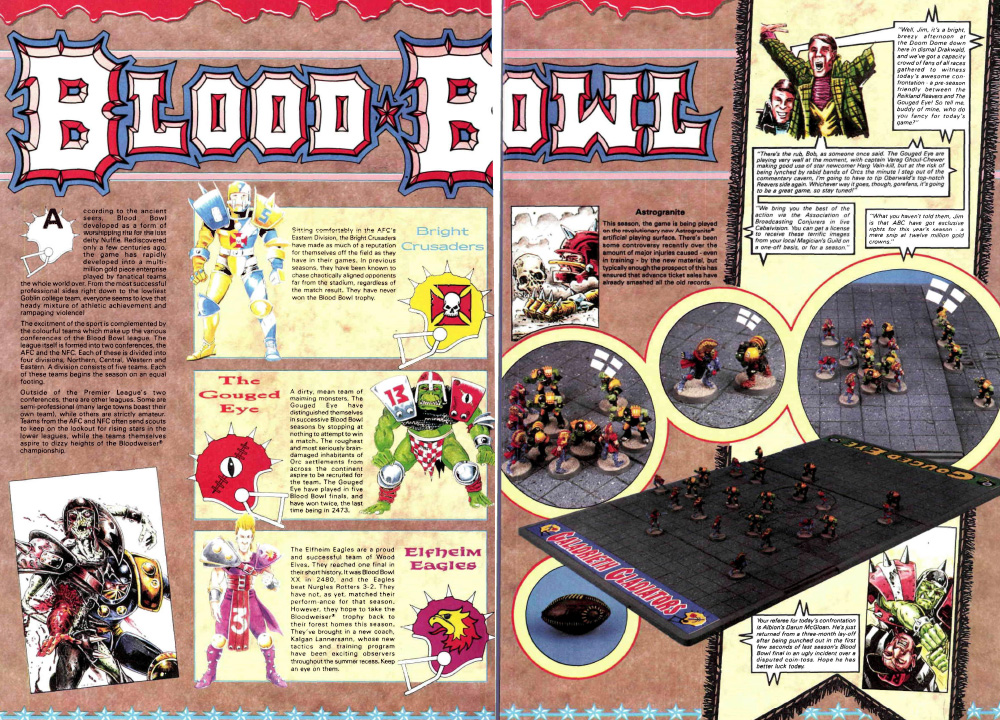
More teams followed, along with expansions such as Death Zone that introduced advanced rules, Star Players, and a new way to play – Dungeon Bowl – which has remained popular ever since. The rules for this second edition of Blood Bowl tended to result in rather long games, and in 1994 a new edition was unleashed on the world that would change this, and bring about the core of the game we still play today.
The third edition of Blood Bowl was redesigned from the ground up for faster gameplay and to create moments where the entire game could swing on a single dice roll. Innovations like turnovers, where failing an action would end your turn, led to games becoming fast, furious, and more fun than ever. Once again, a new boxed set contained Orcs and Humans, along with the pitch, dugouts, and a small mountain of counters and measuring doodads.
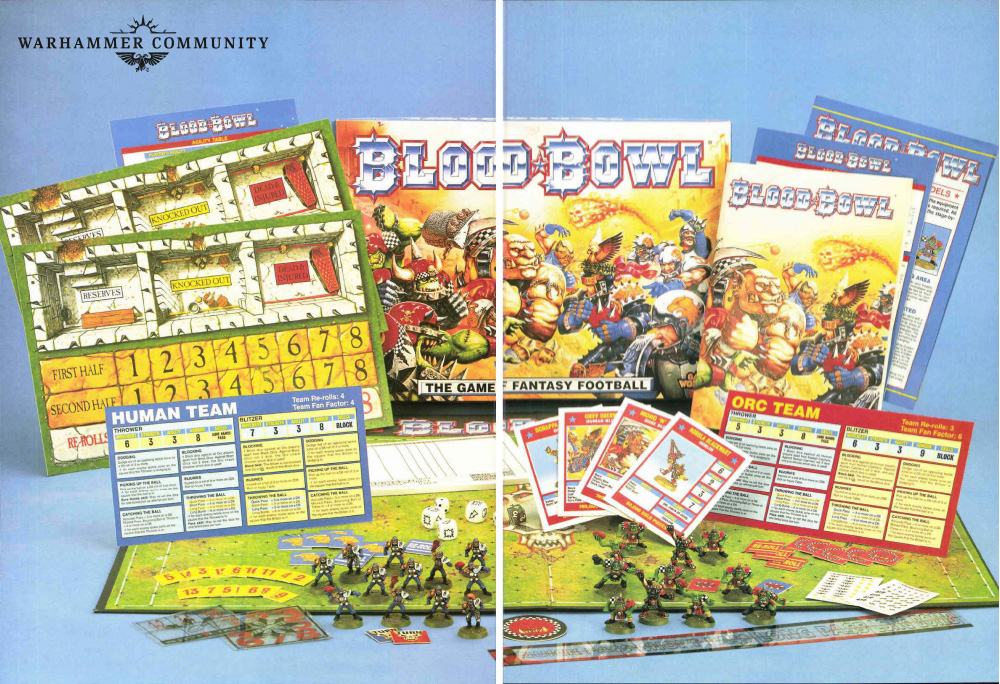
This edition’s version of the Death Zone expansion added six new teams, wacky special play cards, and in-depth rules for playing long-lasting leagues, with each season capped by a tournament. Over the next few years, the game continued to expand, with new teams added in various magazines and supplements, alongside loads of Star Players, and both the original rulebook and Death Zone being consolidated into a single unified Blood Bowl Handbook.
Notably, two of the teams added in this period are starring in the new boxed game – Bretonnians and Tomb Kings. While Bretonnians never received miniatures,** instead often being lovingly converted from Human teams and Warhammer miniatures, a Tomb Kings team was released in metal.
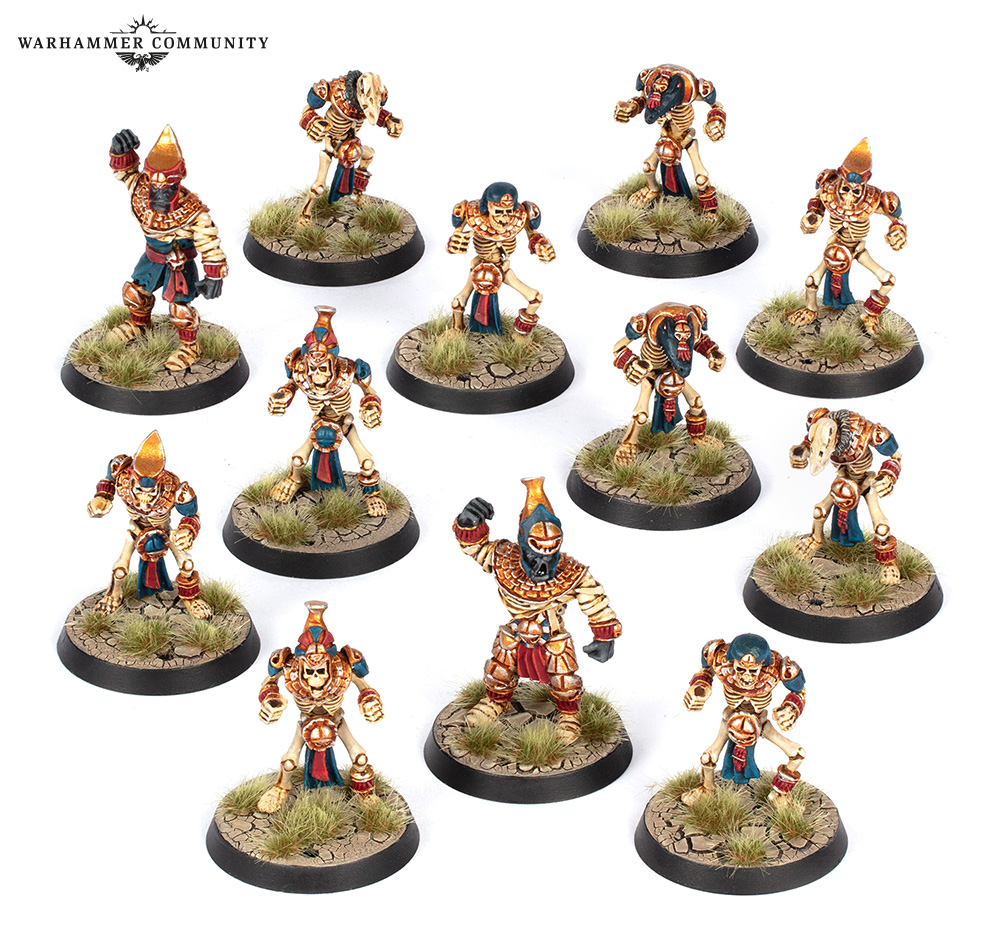
In the early 2000s, the game moved to a “living rulebook” format, with a Blood Bowl Rules Committee comprising developers and players overseeing the game. This continued until 2016, when the first brand new edition for over twenty years hit the shelves.
The 2016 edition of Blood Bowl was instantly recognisable to long-term players, with all the classic teams and rules present and accounted for, updated for a new generation of coaches to enjoy – and Orcs and Humans in the box, of course! Incredible new plastic kits made teams more dynamic than ever, and the roster of teams and Star Players expanded, bringing more fun to the game via regular releases with new rules in issues of Spike! Journal.
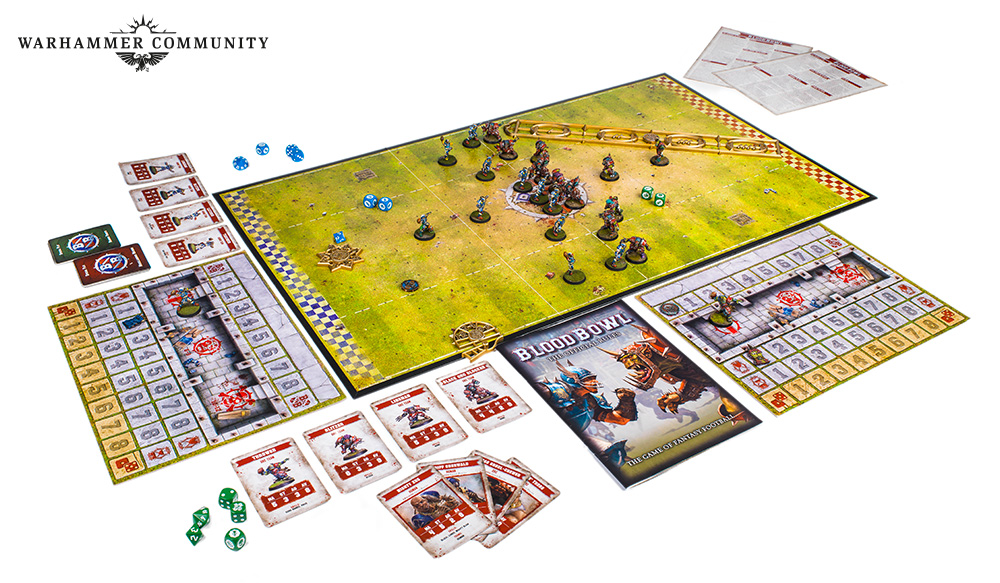
In 2020, the Second Season Edition made some bold changes to the venerable rules of the game, reintroducing the Passing stat from bygone days, among other things, and shaking up the teams in the boxed set – this time with Black Orcs and Imperial Nobility, alongside the first ever plastic Star Players and referees. The game continued its relentless expansion, bringing classic teams back in stunning new plastic iterations, and adding even more new teams to boot, including popular underdogs like Snotlings and Gnomes. Add in new Star Players, and even more Spike! Journal issues, and it was a packed line-up..
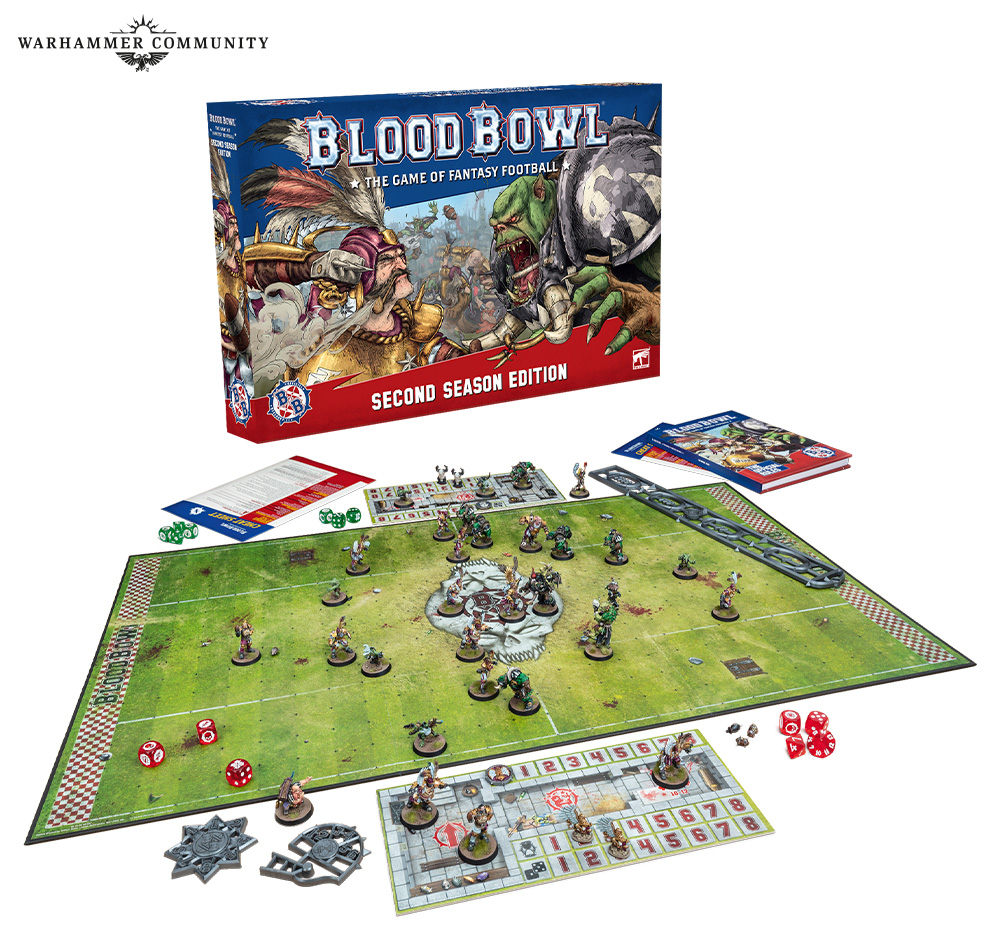
And that brings us neatly to the present, where the Third Season Edition is building on what has come before to make the game better than ever… even if it is eschewing tradition by not having Orcs in the boxed set for the first time ever. Instead, the new set holds up a mirror to the starter sets for Warhammer: The Old World as the Tomb Kings rise from their centuries of rest, ready to face the knights of Bretonnia and their trusty squires..
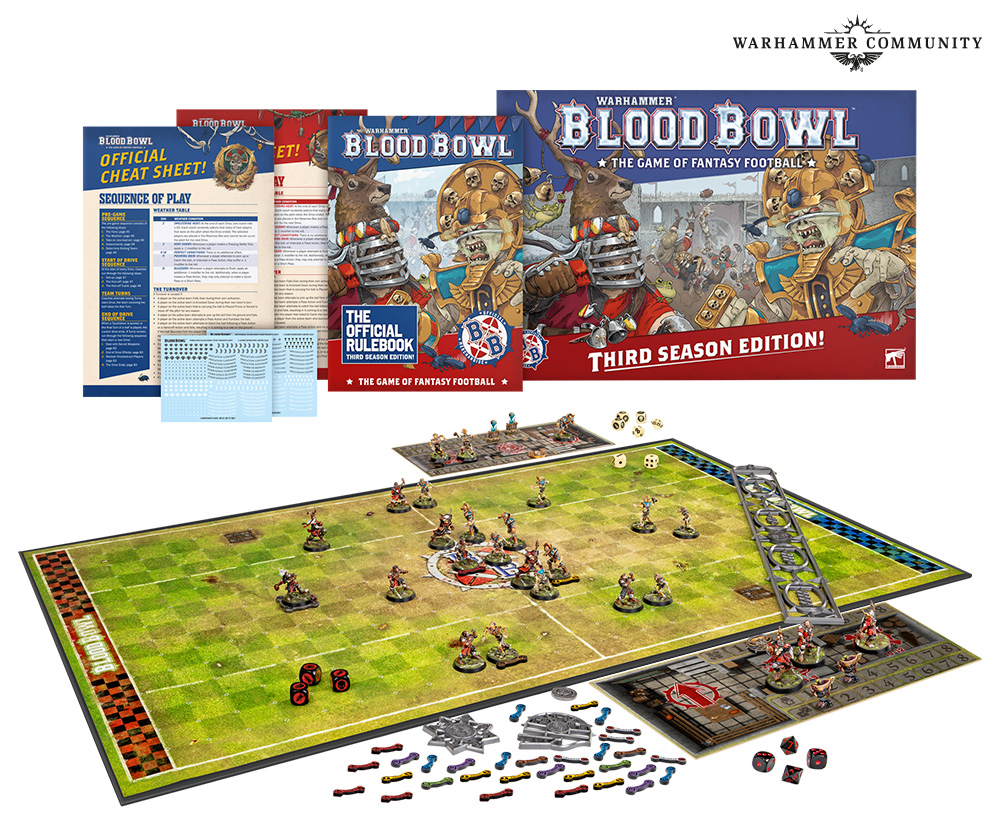
We’re assured that there’s plenty more to come from the game of fantasy football in the months and years ahead, and we can’t wait to see what’s next!
* Making it a year older than Warhammer 40,000!
** And their roster was significantly different, being mostly made of malodorous Peasants, with limited numbers of Knights to support them.


